Family Garden and berry-bright possumhaws at Wildflower Center
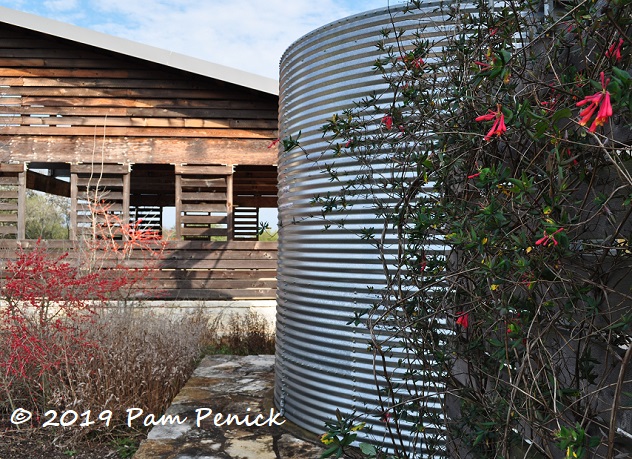
Continuing with my recent visit to the Lady Bird Johnson Wildflower Center, let’s explore the Family Garden and see how it looks in late winter. Again, possumhaw holly (Ilex decidua) berries blaze bright red, alongside early blossoms of coral honeysuckle (Lonicera sempervirens). The galvanized steel cylinder is a rainwater cistern.
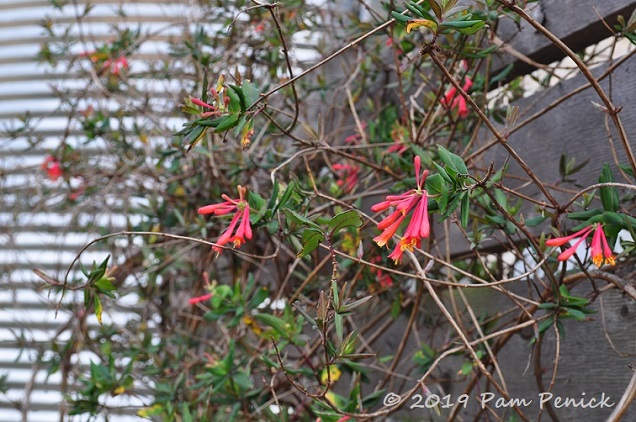
Coral honeysuckle clambering up a wood-slat trellis.
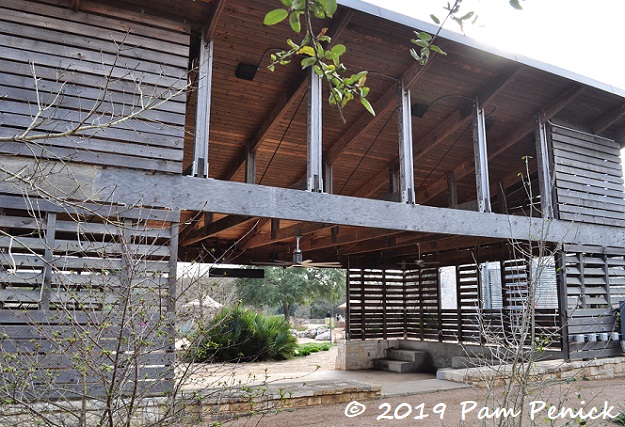
A barn-like structure in the Family Garden offers shade and a performance or learning space.
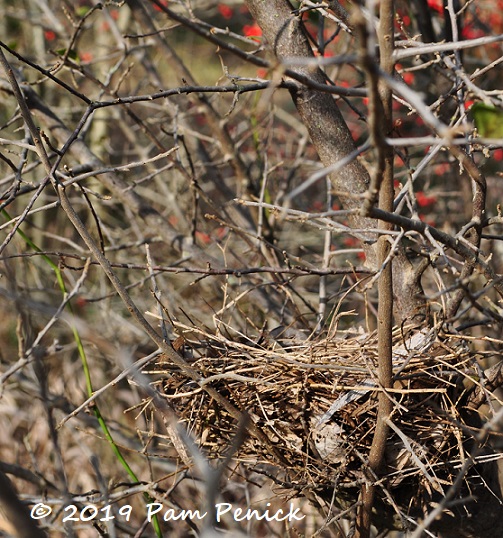
Cradled in the branches of a small tree, a bird’s nest from last season will probably serve as Home Depot for this year’s constructions.
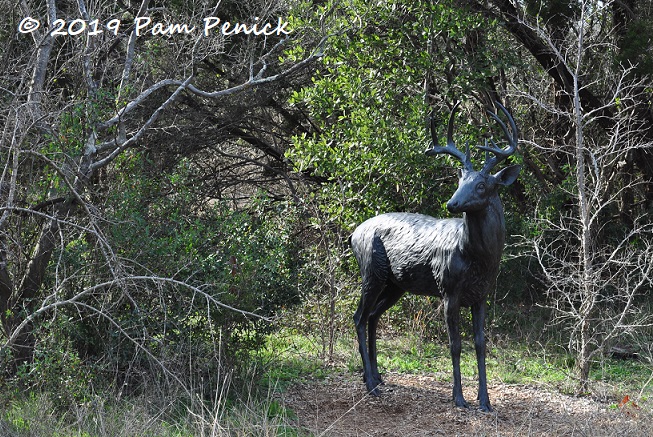
Bronze animal sculptures by David C. Iles are half-hidden among the plants and stonework.
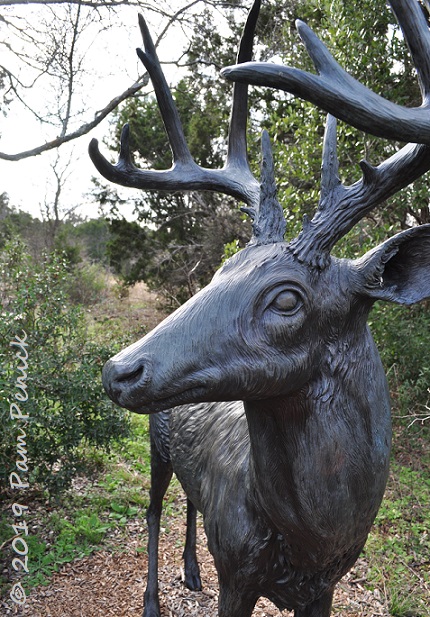
This stately buck is one of my favorites.
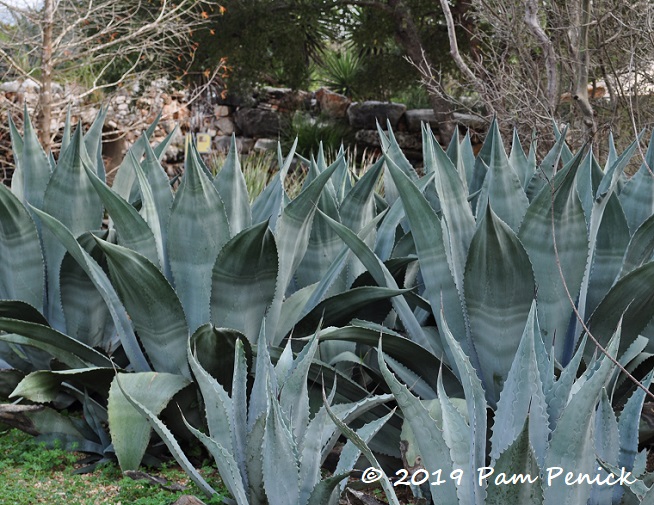
A mass of American agave, like blue-green flames
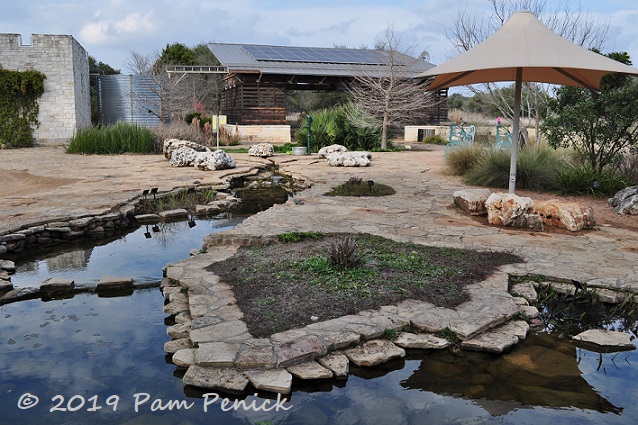
A stream meanders through the heart of the Family Garden, with “headwaters” marked by holey limestone boulders representing the aquifer. A hand pump invites kids to fill pails with water and pour it over the rocks and into the stream.
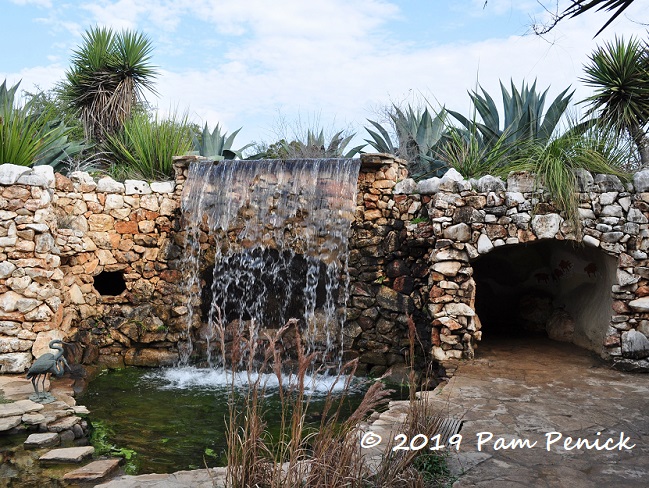
At the end of the stream, a thundering waterfall screens an opening in a kid-sized cave.
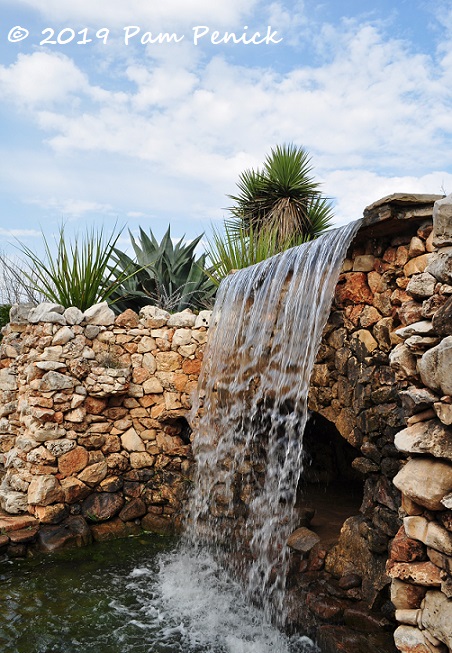
On busier days, you’ll see kids standing inside with hands outstretched in the water.
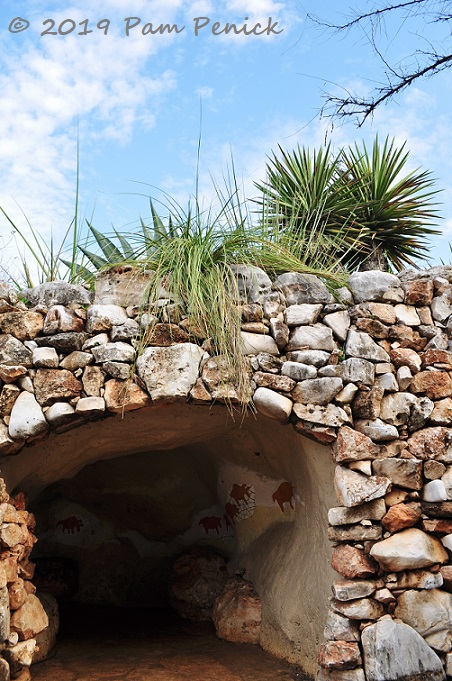
Tile cave art decorates the inner walls.
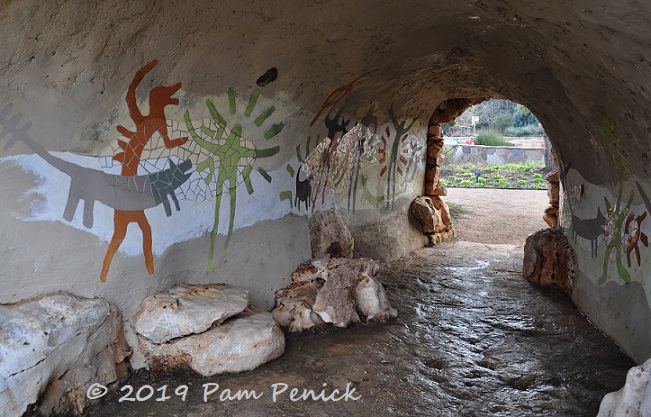
In a tunnel-cave, the art takes a decidedly Keith Haring turn.
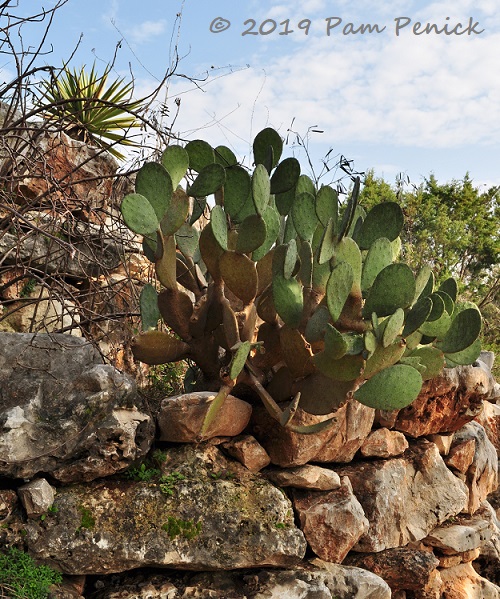
Prickly pear grows in rocky crevices.
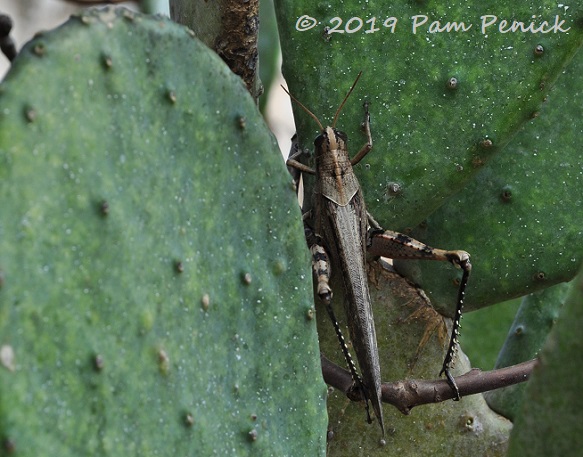
A bandy-legged grasshopper finds refuge amid the spineless pads.
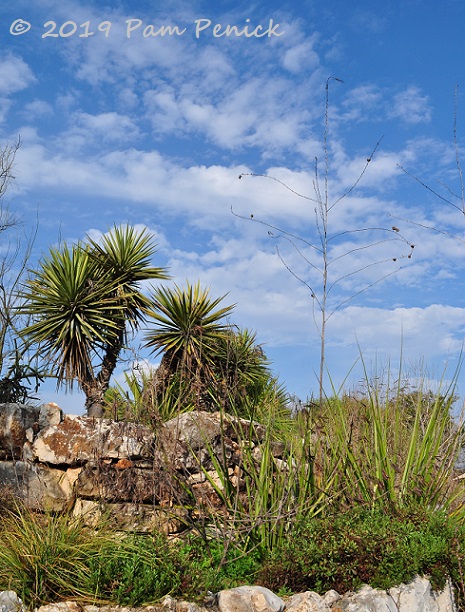
Trunking yucca and giant hesperaloe thrive atop the cave’s rocky roof.
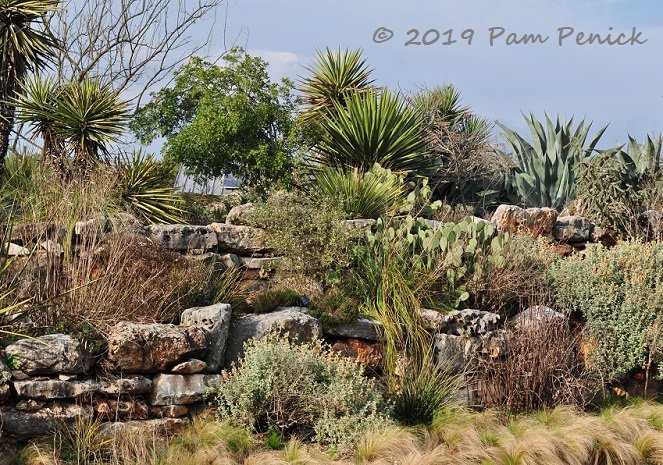
There’s an entire xeric garden up here.
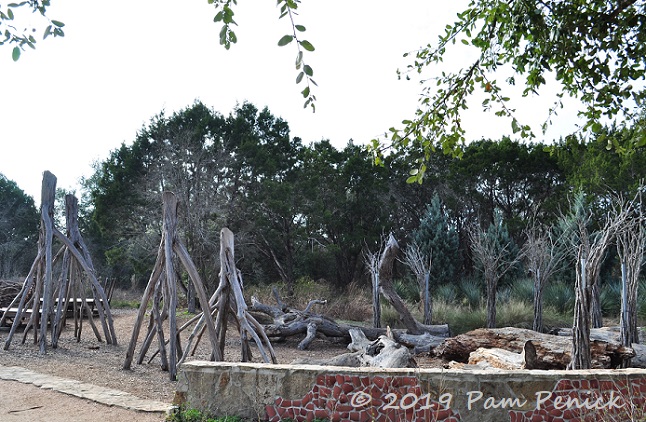
The stumpery is my favorite space in the Family Garden. Inverted “walking” tree stumps and ghostly bundled branches stand tall amid long balance beams of fallen trunks.
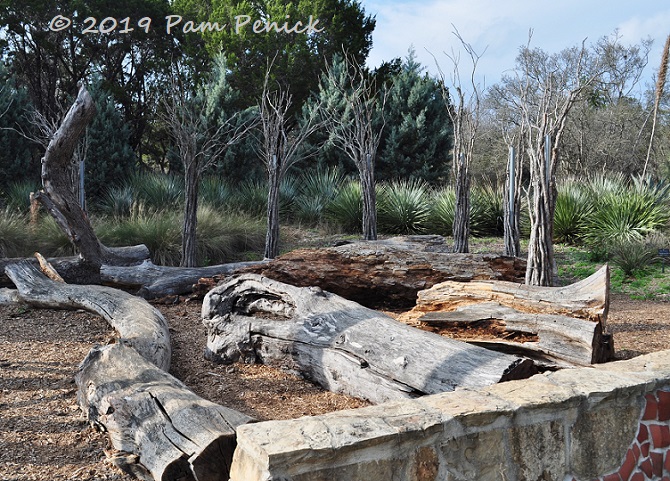
It looks like a fun place to play.
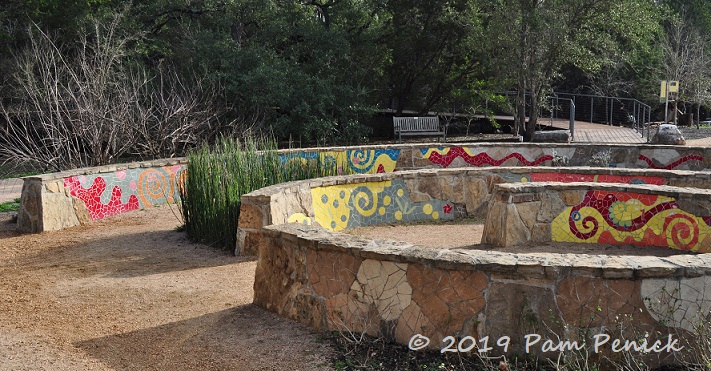
A spiral wall adorned with colorful tile art invites visitors to find nature’s own Fibonacci spirals in nearby plants.
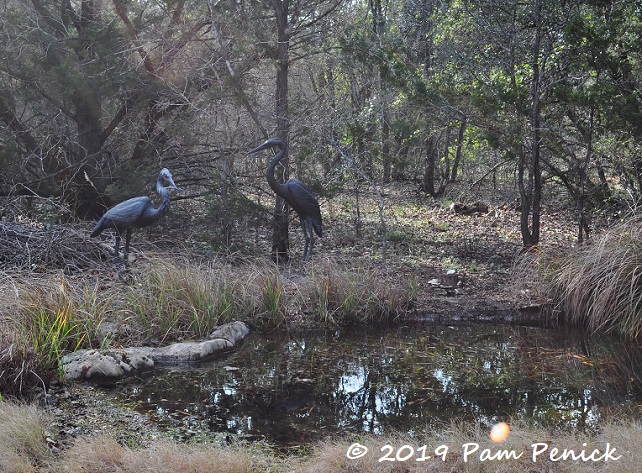
Behind a cedar bird blind, a small pond and feeding stations attract birds, as well as two bronze egret sculptures.
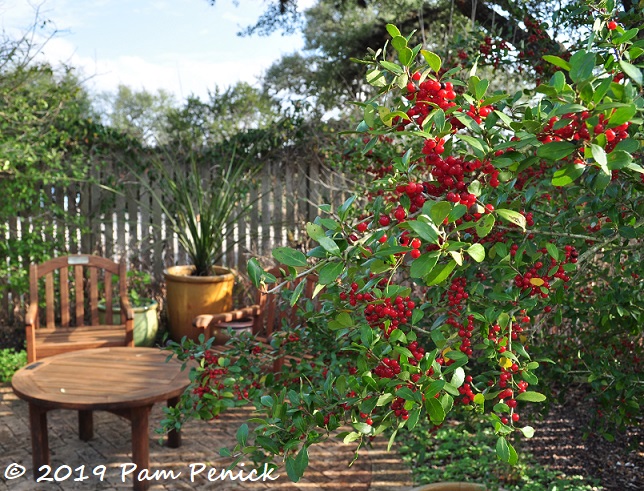
Heading back to the main gardens, I spotted more bright-red berries — not possumhaw this time but its evergreen cousin, yaupon holly (Ilex vomitoria).
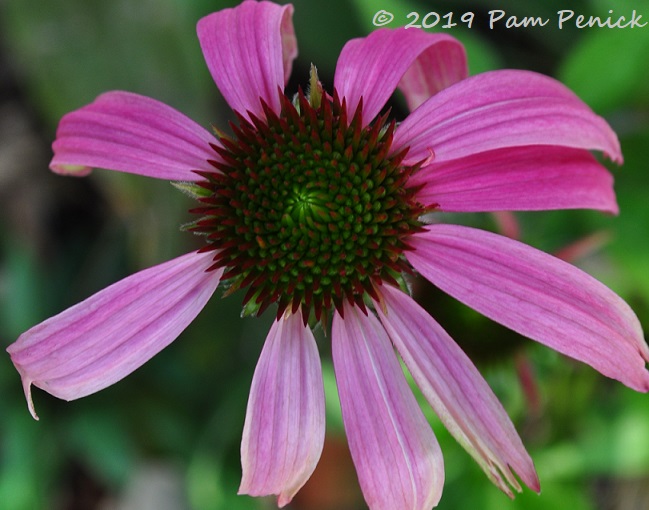
A few purple coneflowers (Echinacea purpurea) were in bloom, braving the risk of a late freeze.
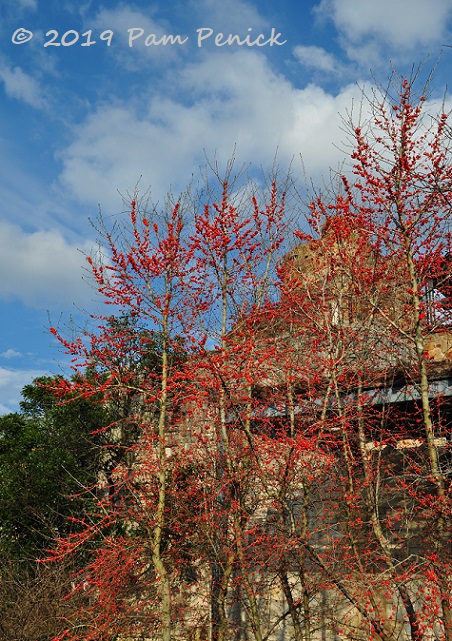
But around the main courtyard and the landmark tower, it’s all about the possumhaw in early February.
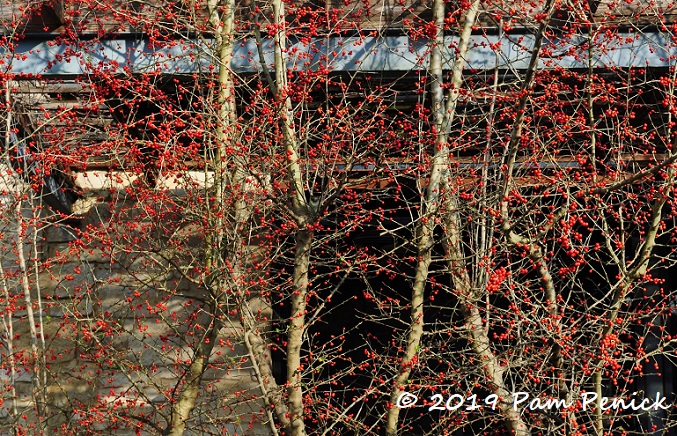
Berries, berries, berries!
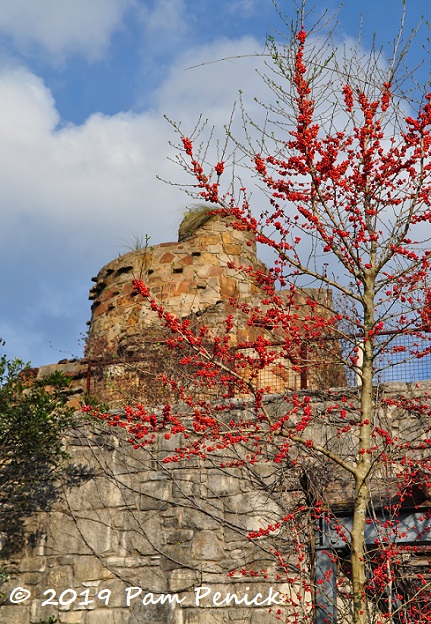
In my own garden, all day I hear the piercing cries of cedar waxwings flocking to yaupon, possumhaw, and nonnative (and invasive) ligustrum. I wouldn’t be surprised if by now many of these possumhaws are stripped bare by hungry birds.
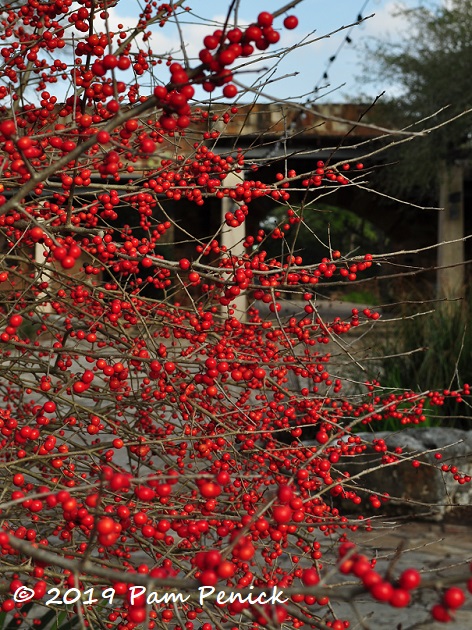
I’m glad I caught them at peak color. Soon the berries will be nurturing the birds, and fresh green leaves will be unfurling on branches.
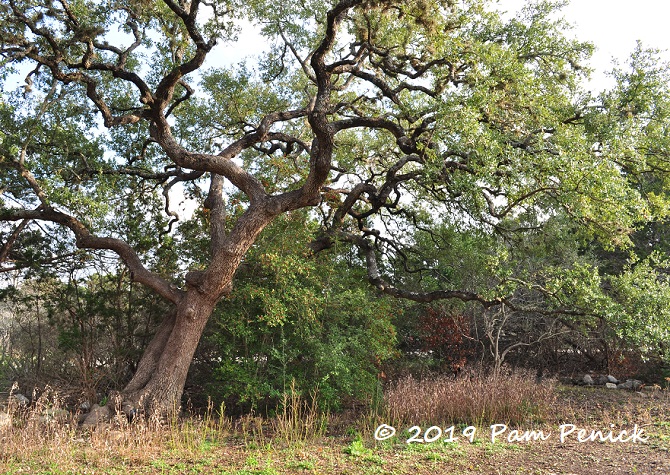
Live oaks too will soon be dropping their leathery green leaves to push out new foliage. That spells a big mess in my live oak-shaded garden, but it’s all part of the seasonal cycle.
I hope you enjoyed these late-winter scenes at the Wildflower Center. If you missed part 1 about the Center’s meadows — and more possumhaws — you can find it here.
__________________________
Digging Deeper
Come learn about gardening and design at Garden Spark! I organize in-person talks by inspiring designers, landscape architects, authors, and gardeners a few times a year in Austin. These are limited-attendance events that sell out quickly, so join the Garden Spark email list to be notified in advance; simply click this link and ask to be added. Season 8 kicks off in fall 2024. Stay tuned for more info!
All material © 2025 by Pam Penick for Digging. Unauthorized reproduction prohibited.


It’s great that the possumhaw berries are still so showy this late in winter (says the gardener who planted a tiny one two springs ago). It’s downright eerie, though, to see blooms so early in the year from the coral honeysuckle! Still, that’s what’s so valuable about the native honeysuckle: it’s available for early-migrating hummingbirds. (Hummers don’t overwinter as far north as the hill country, do they? Have you seen any arrivals yet?)
Coral honeysuckle is also a great trap plant for aphids; they flock to its very early new foliage, which in turn attracts lady beetles. This works like a charm here in late March/early April.
I haven’t seen any hummingbirds yet, Nell, but I suspect it’ll be soon. Looks like spring is coming early this year in Central Texas. Good to know about the aphid trap!
I loved this garden in May last year, so great to see it now. Equally wonderful. A special place – I’m glad to have been a supporter for 25+ years!
That’s a lot of years of support, Lisa. Way to go!